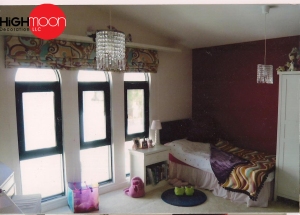 Painting the wall has a great importance in office interiors. Many interior professionals have stated that the painting can even change the mood of the persons. Painting is really a simple process; still we take the help of interior professionals for painting works. Here are some tips for you; by a leading professional interior designer from Highmoon Interior Decoration L.L.C. And these steps may help you to follow to paint like professionals.
Painting the wall has a great importance in office interiors. Many interior professionals have stated that the painting can even change the mood of the persons. Painting is really a simple process; still we take the help of interior professionals for painting works. Here are some tips for you; by a leading professional interior designer from Highmoon Interior Decoration L.L.C. And these steps may help you to follow to paint like professionals.
The first step is to find the best shade on your walls. Choose the color by  the function and the mood of the room. Choose colors that reflect those feelings. Also determine the most appropriate type of paint finish for the project. If you are working in a kitchen or bathroom, paints with a semi-gloss finish work well.
the function and the mood of the room. Choose colors that reflect those feelings. Also determine the most appropriate type of paint finish for the project. If you are working in a kitchen or bathroom, paints with a semi-gloss finish work well.
 After that step is to arrange the room for paint job. Begin the job by taking out all artwork, shelf, electrical outlet covers or anything else that is on the wall. Move all furniture to the center of the room and cover it with a drop material.
After that step is to arrange the room for paint job. Begin the job by taking out all artwork, shelf, electrical outlet covers or anything else that is on the wall. Move all furniture to the center of the room and cover it with a drop material.
Once the walls and room are clear, mix warm water with little drops of mild detergent and clean down the walls and trim with a soft sponge or cloth. Clean those with clean water when you’re completed, and as the walls are drying, examine them for any holes, scrapes or cracks you will need to repair with a spackling compound. Fill these blemishes in with spackle as necessary, and smooth the corrected areas with sand paper. Some professionals consider it a best practice to sand the whole wall before going on, as this will flat out any more mild flaw and will help the paint grip the wall. If you do this, wipe down the walls with a damp cloth to take away any extra dust formed by sanding. The last stop of prep work is to tape off the trim and bends with painter tape.
The preparation work is now complete, it’s time for primer. Don’t make the mistake of missing this main step in the  process. Primers provide your completed product a higher excellence look and can decrease the number of paint coats you will need. Primer is particularly useful when going from a darker wall color to a lighter color.
process. Primers provide your completed product a higher excellence look and can decrease the number of paint coats you will need. Primer is particularly useful when going from a darker wall color to a lighter color.
 When the primer is dry, it’s finally time to get the color on the walls. Start by using a paint brush to paint a small border of one-to-two inches of the wall color around the trim, windows, doors and where the wall meet the ceiling and floor. Do this in little sections so that the paint will still be wet when you roll in the rest of the selected area.
When the primer is dry, it’s finally time to get the color on the walls. Start by using a paint brush to paint a small border of one-to-two inches of the wall color around the trim, windows, doors and where the wall meet the ceiling and floor. Do this in little sections so that the paint will still be wet when you roll in the rest of the selected area.
Once you have formed your border for one section, fill in the rest of the area using a paint roller. Immerse, but don’t soak, the roller in the paint, and use the breaker to make a large “M” or “W” shape on the wall that is three-to-four feet in size. Next, use vertical strokes of the roller to load in the area and deal out the paint. Be certain to partly cover the edge of the border you painted with the brush for a smooth, continuous look. Employ this way to total the wall.
Wait until your first coat is completely dry before applying additional coats, if needed.